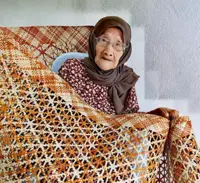'I continue to weave because my heart tells me to weave,' says Ngot. Photos: Edric Ong
Ngot Bi, is 91 years old and is one of the most revered senior citizens in Kampung Semera Ulu Sadong Jaya, Asa Jaya, Sarawak where she lives. She is among the few remaining traditional mat weavers in the state and boasts over 80 years of experience in the craft, making her the go-to person for handcrafted mats in the community.
“When I was younger, I learned weaving in my village. I practised slowly, day and night. Over time, I became skilled in weaving,” she says.
Already a subscriber? Log in
Save 30% OFF The Star Digital Access
Cancel anytime. Ad-free. Unlimited access with perks.





